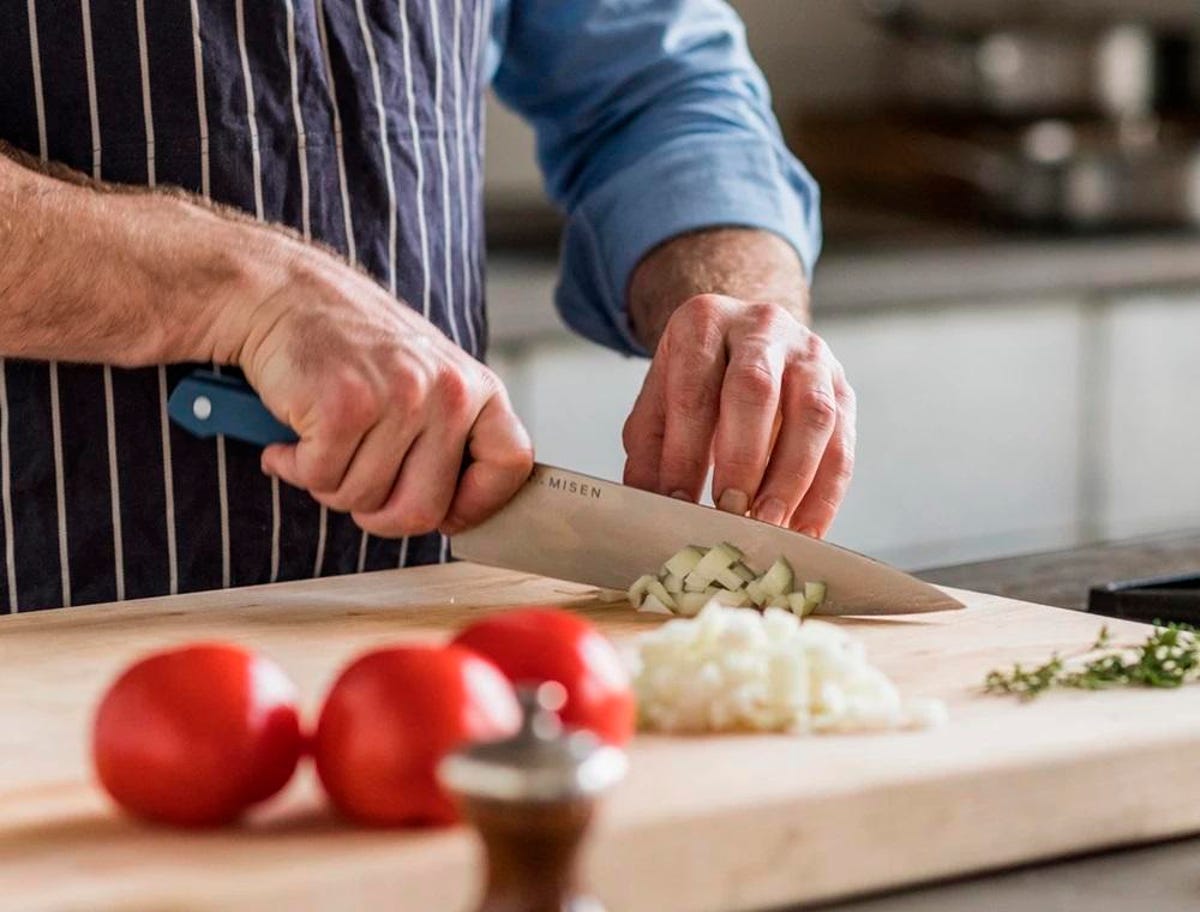For anyone serious about cooking, choosing the right chef knife is a transformative decision. A top-notch chef knife isn't merely a tool; it becomes an extension of your culinary skills and creativity. With countless choices available, figuring out what to consider when selecting a chef knife can be daunting. From the composition of the blade to the comfort of the handle, every component matters. This guide aims to simplify the key factors you should notice to make a smart investment in this essential kitchen implement.

Why Is the Right Chef Knife Essential for Kitchen Professionals?
A chef knife ranks among the most adaptable tools in a chef's toolkit, able to chop, slice, dice, and mince effortlessly. However, not every chef knife is built the same. Some prioritize precision, while others are crafted for durability. Recognizing what to consider when selecting a chef knife can help you avoid wasted time, unnecessary expenses, and the headache of dealing with an ill-suited blade. A well-chosen knife not only boosts your efficiency but also enhances safety; a well-balanced, sharp knife is less prone to slippage and mishaps.
In this section, we will explore why:
- A well-balanced blade promotes effortless motion.
- High-quality materials ensure greater longevity and performance.
- An ergonomic handle minimizes strain on your hands.
Effective Tips for Selecting the Right Chef Knife
Blade Material: The Foundation of Your Essential Knife
When considering what to look for when buying a chef knife, the material of the blade is paramount. The two most prevalent options are stainless steel and high-carbon steel.
- Stainless Steel: Recognized for its resistance to corrosion, stainless steel blades are easier to maintain and are perfect for busy kitchen environments.
- High-Carbon Steel: These blades maintain sharpness longer but necessitate more upkeep to guard against rust.
Additionally, ceramic knives have surged in popularity due to their remarkable sharpness, even though they may be prone to chipping. Before finalizing your choice, consider your maintenance preference and the typical cutting tasks youll undertake.
The Blade Length: Whats the Ideal Size?
Chef knives vary in length, usually between 6 to 12 inches. Heres what to keep in mind:
- A knife measuring 6 to 8 inches is excellent for novices or individuals with smaller hands.
- A knife between 9 and 12 inches offers an extended reach, ideal for professional chefs requiring precision in larger food preparations.
For most professionals, an 8-inch chef knife strikes a commendable balance of adaptability, agility, and control.
The Handle: Ergonomics for Comfort
The handle significantly affects a chef knife's functionality. Given that professionals spend hours in the kitchen, a poorly designed handle can lead to hand strain or even injury. Consider the following:
- Material: Wooden handles offer a timeless appeal but need more upkeep, whereas plastic or composite handles are far more resilient and easier to clean.
- Design: Seek a knife featuring a non-slip grip and a comfortable shape that fits naturally in your hand.
Weight and Balance: Essential for Precision Cutting
Finding the right weight is subjective and heavily relies on personal preference. Nonetheless, the knife should feel well-balanced when held, allowing for smooth maneuverability. Test various options to identify one that feels like a natural extension of your hand.
Innovative Technologies That Enhance Knife Quality
Recent advancements in knife-making have led to exciting manufacturing technologies: lasers are now used to sharpen knives with remarkable precision, while specific annealing processes improve durability. Both Japanese and German knives are celebrated for utilizing these innovations, providing exceptional performance in both home and professional settings. For further insights, check out how to sharpen knives effectively.
FAQs
1. What is the typical lifespan of a chef knife?
With proper maintenance and care, a professional-grade chef knife can last anywhere from 5 to 10 years or even more.
2. Do pricier knives genuinely make a difference?
While an expensive price doesn't always guarantee quality, investing in a reputable brand can lead to superior materials, craftsmanship, and performance.
3. How often should I sharpen my chef knife?
The frequency of sharpening depends on how often you use the knife. Most professionals sharpen their knives weekly or use a honing rod daily to keep the edge intact. Learn how to sharpen a kitchen knife for best results.

Conclusion
Understanding what to consider when selecting a chef knife involves reflecting on your cooking habits, maintenance capabilities, and ergonomic needs. With this eye-opening guide, you are prepared to make a transformative choice that will benefit you for years ahead. Dont forget to explore knife sets for professionals, or see differences in boards to complement your kitchen!
This article contains affiliate links. We may earn a commission at no extra cost to you.


























